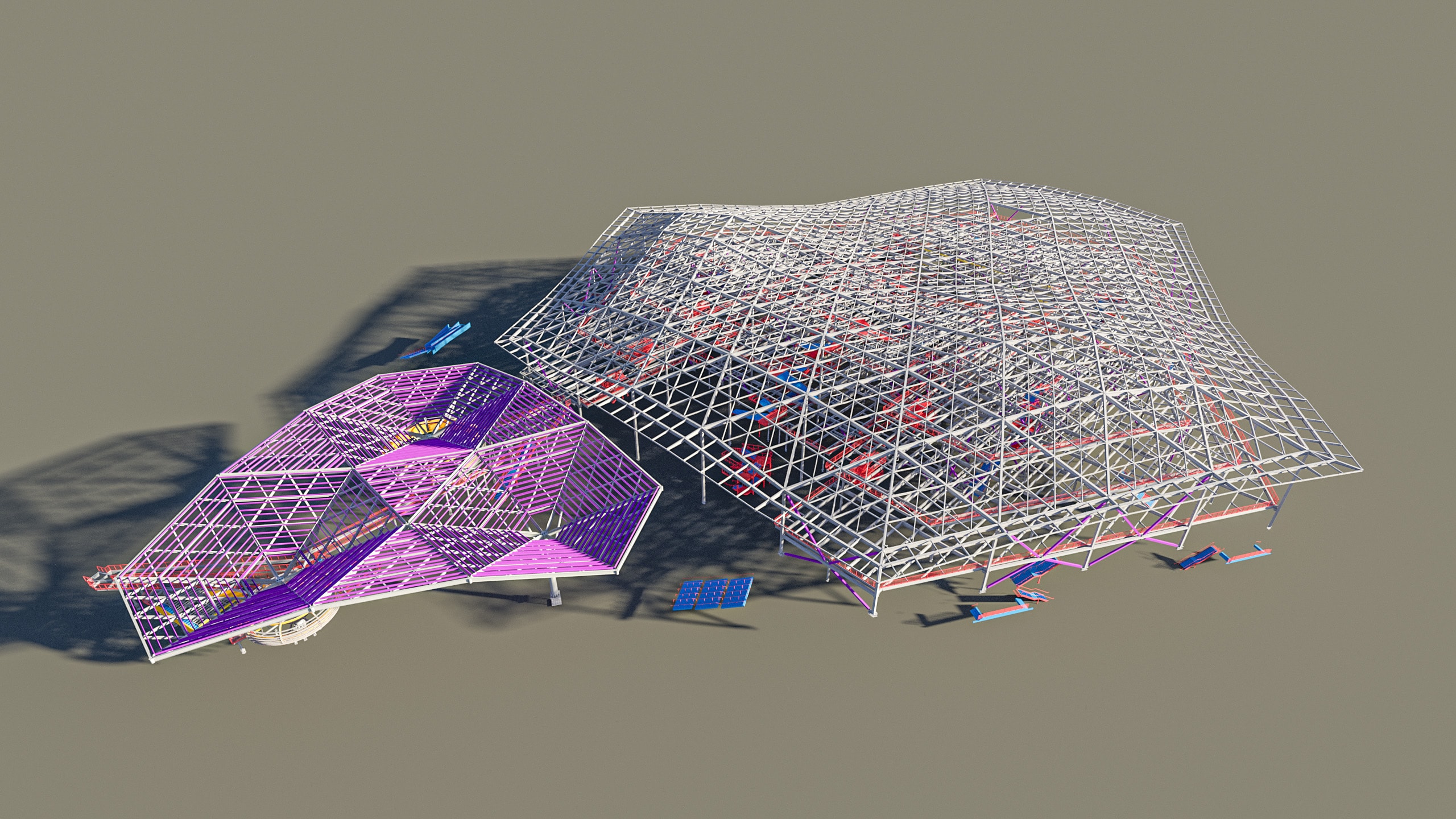Digital delivery is rapidly changing the way that contractors and sub-contractors work in the construction industry. Traditional 2D plans are becoming less relevant with many projects now relying on purely 3D delivery through Building Information Modelling (BIM). Some of the benefits that a 3D model enables are centralization of design, construction and operations data, more productive and collaborative methods of planning, and maintaining a digital representation of an asset through its lifecycle.
With many clients now requiring model-based deliverables, it is becoming essential for contractors to integrate BIM into their services, so they can remain competitive and secure work. But BIM also offers a wealth of benefits to contractors and subcontractors. By providing access to real-time project information, it can help them optimize all tasks, from budget allocations, material procurement, site planning, quality control, and site safety.
1. Better Collaboration During Pre-Construction
BIM facilitates collaboration during the pre-construction phase of a project, allowing owners and designers to communicate directly with the contractor in a contextualized environment and make key decisions more effectively. Contractors can perform a virtual walkthrough with architects and engineers to determine areas that need improvement and recommend solutions, such as improved window placement or alternative building materials. New developments in the AEC industry include virtual walkthroughs is the use of real-time model environments created through gaming engines such as Unreal Engine 5.
Using simulations, contractors can detect design flaws and coordination issues, for example sequencing or clashes. This helps avoid reworking, delays, and unnecessary costs during construction. The benefit of having the ability to interactively walk through a project and visualize its schedule and how all building systems come together cannot be understated.
Improved Site Safety
BIM can help contractors visualize complex construction processes to identify potential issues and hazards before they occur. 3D animations and simulations enable planning for machinery placement, crane movement, and vehicle access, resulting in more effective on-site coordination with better safety outcomes.
Contractors can also use these immersive methods to educate staff, with the ability to provide gamified virtual environments that can highlight design improvements as well as train staff about onsite operational hazards. Visualizations can also be used to replicate scenarios, such as a fire, and communicate the processes for preventing injury and ensuring on-site safety due to improved onsite design and eliminated operational hazards.
Fast and Accurate Estimates
Traditionally, contractors use 2D drawings to estimate the expenses, materials, equipment, and labor needed to complete a project. However, manual tasks like this can lead to rework due to errors, and ultimately impacting cost. This manual process is also laborious and time-consuming.
BIM tools automatically calculate the quantity of materials, systems, costs, and labor needed for a project. This can typically be completed in the native design authoring software, but when using a single federated model, this can be more challenging. As a result, contractors can develop ways to create fast and accurate bids, and detailed cost estimation models – making it easier to deliver projects on schedule and budget. BIM also facilitates greater coordination between sub-contractors and contractors and the interface points between scopes to then ultimately detail the costs involved with their specific tasks for the project, which they can add to the model to update cost estimate calculations.
Reduced Costs and Wastage
Having cost and scheduling certainty from the commencement of the project saves time, money, and resources through the construction process but is challenging with the fragmented nature of the construction industry. Because BIM looks to enable a single source of truth of information, contractors should be able to order the exact quantity of materials they need during the planning phase, to then avoid either over-ordering and causing wastage, or under-ordering and triggering schedule delays. An important consideration of this process, is to accurately define what needs to be modelled and to what level extent; known as Level of development and Level of information.
Additionally, with BIM facilitating the ability to generate highly accurate models of building components, it provides a great opportunity for pre-fabrication, so that contractors don’t need to build components on-site from scratch. According to a 2020 SmartMarket Report, 84% of trade contractors using BIM for pre-fabrication said it improved cost predictability, while 81% said it reduced waste in construction – along with citing a range of other benefits including higher quality, productivity and safety.
A Seamless Workflow
BIM should be a dynamic source of 3D and 2D information that evolves and adapts as the project progresses, to support an efficient, collaborative workflow. Contractors can change documentation and design aspects, and these changes will be instantly visible to all stakeholders. With centralized project information, BIM allows contractors to assign and input tasks for sub-contractors, and monitor their progress in real-time. With a robust process to capture construction progress, labor productivity information can be captured and enable even greater transparency.
A detailed cost-benefit analysis of BIM showed that its use saved about 15% in change orders, accounting for the most significant financial benefit of digital delivery. What’s more, because sub-contractors are responsible for generating data and deliverables based on the model or with a model themselves, they effectively become partners in the project – increasing their value to its overall development.
In Conclusion: BIM Delivers Proven Benefits to Contractors and Sub-Contractors
If managed and implemented correctly, BIM tools provide contractors and sub-contractors with access to highly accurate project models and centralized information – giving them full visibility over the entire project before, during and after construction. Leveraging real-time data, contractors can track progress and streamline workflow, to drive greater productivity at lower cost. Contractors and sub-contractors who integrate BIM not only enhance their own business model but deliver greater value to clients, ensuring they remain competitive in a digital world.



